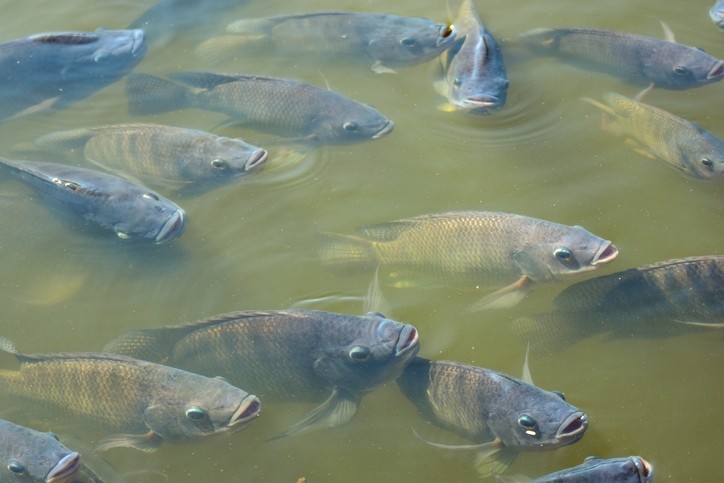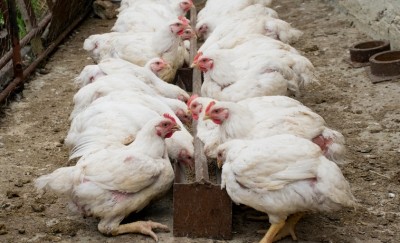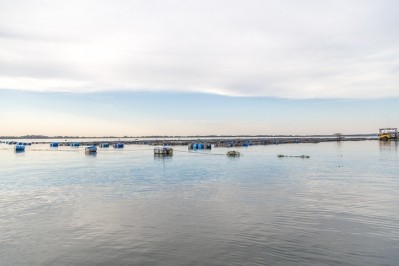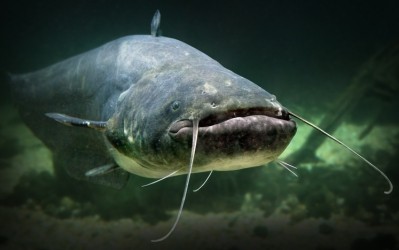Starches touted as attractive option for fish feed

A team of researchers from the University Putra Malaysia, Gorgan University of Agricultural Sceicneand Natural Resouce in Iran and Kentucky State University examined the use of tapioca starch (TS), pre-gelatinized starch (PGTS) and isomaltooligosaccharides (IMO) in pelleted aquaculture feeds.
The group published its work in the journal Aquaculture.
“The aim of this study was to investigate the effects of native or PG tapioca starch with or without dietary IMO on various pellet characteristics and subsequent changes to the growth, feeding efficiencies, muscle proximate composition/cholesterol content, plasma biochemistry, trypsin/chymotrypsin activities, liver glycogen and intestinal SCFA of African catfish Clarias gariepinus,” the researchers said.
The researchers found that there were no growth differences between fish getting the different trials feeds, but that catfish getting diets with pre-gelatinized tapioca starch tended to have improved feed efficiency.
“The inclusion of dietary PG starch led to an improvement in pellet quality, and this finding along with a reduction in feed intake without compromising growth, could have significant feeding cost benefits in commercial settings,” the researchers added.
“Despite a reduced feed intake, there was evidence of more available energy in catfish fed the PG starch, IMO or in their combination,” they said. “Therefore the use of PG starches could be a particularly attractive option for farmers that manufacture pellets on site using simple technology.”
Why starch, IMO and pellet quality?
Starches have been added to aquafeeds to provide an inexpensive form of energy, the researchers said. Starch also will gelatinize when aquafeeds are extruded during high-heat conditions. The process degrades the insoluble portions of the ingredient.
The pelleting process may improve the solubility of pellets in water and allows for improved use for the fish and better stability and durability in the pellets, they said. However, some producers make their own pellets and use reduced amounts of heat and pressure.
The low-heat process, however, limits the starch gelatinization and makes pellets more fragile and less digestible, they said. One way to address this could be through the use of pre-gelatinized starch in producer-made pellets.
Pre-gelatinized (PG) starch can be cooked, dried and powdered before it is included in a feed, they said. The use of PG starches has been linked to improved digestibility, but the effect on growth appears to be species-specific.
“Increased starch gelatinization decreased feed intake and growth, as observed in the European eel Anguilla anguilla, European sea bass Dicentrarchus labrax and yellowfin seabream Sparus latus,” the researchers said. “Meanwhile, for rainbow trout Oncorhynchus mykiss and sea bream Sparus aurata, there was decreased feed intake but without a growth reduction when fed PG starches, which was suggested to be due to a longer retention time in the gut.”
Research regarding the use of PG starches on the immunological response in aquaculture is limited, they said. Use of PG starch in some fish has been tied to a reduction in innate immunological response and resistance to infection.
Volatile fatty acids play a role in fish health and feeding PG starches may reduce intestinal short chain fatty acids availability by improving digestion and limiting available carbohydrates, they said. “One strategy to mitigate this reduction, and potentially improve immunity, is by the combined administration of PG starches with prebiotics,” they added.
Prebiotics provide an indigestible, but fermentable, carbohydrates that may boost fish growth and health, said the researchers. The improvement has been linked to improved digestive enzyme activity and altered intestinal microbiota.
“Some of the more commonly used prebiotics in aquafeeds include alginate, inulin and various oligosaccharides,” they said. “Among the oligosaccharides, isomaltooligosaccharides (IMO) is a mixture of isomaltose, isomaltotriose, panose, isomaltotetraose and others, which consist of alpha (1, 6) linked glucose homo-oligomers that have sweet-tasting properties but with a low glycemic index.”
However, little work has been done examining IMO in fish feeds, they said.
Methods and materials
In the feeding trial, 120 African catfish were given one of four trial diets for a period of eight weeks, said the researchers.
The diets included a diet with 25% tapioca starch without (TS) or with IMO (TS+IMO) at 0.5%, they said. The other two test diets used a pre-gelatinized (PG) tapioca starch and with (PGTS+IMO) or without (PGTS) IMO.
The diets also included fishmeal, soybean meal, fish oil and palm oil, they said. The IMO used was commercially produced.
Pellets generated were measured for bulk density (BD), pellet durability index (PDI), water absorption index (WAI), water solubility index (WSI), water stability (WS) and protein solubility (PS), they said.
Fish were weighed at the start of the trial, they said. All fish were harvested and measured for final weight and length and the survival, feed conversion factor (FCR), specific growth rates (SGR), and condition factor were calculated, said the researchers. Blood samples, muscle, intestinal digesta and fish livers also were collected and analyzed.
Results
Adding PG starch improved pellet quality, the researchers said. The TS diet had the highest BD, while PDI, WAI and WS were higher for the PG diets and an interaction was seen between WAI and IMO.
“The inclusion of IMO appeared to reduce some of the beneficial pellet characteristics the PG starches provided, however, this was an effective way to enhance intestinal SCFA in fish fed the PG starch diet,” they said.
Fish survival was similar regardless of diet, as were growth and condition factor, they said. Fish getting the PGTS diet had the lowest feed intake followed by the PGTS+IMO diet, while fish on the TS diet had the most.
“The feed conversion ratio is an important criterion for assessing the nutritive value of diets and, in the current study, these tended to be lower for C. gariepinus fed the PGTS and PGTS + IMO diets,” they said. “An improvement to these values was not driven by increased growth but rather a significant reduction to feed intake without a compromised growth performance.”
Crude muscle protein and crude ash were higher for fish getting either TS diet, while crude muscle lipid levels, plasma triglycerides and the hepatosomatic index were higher in the PG diets, the researchers said.
Catfish getting the TS+IMO diet had a greater percentage of while cells and thrombocytes, they said. But, the trypsin and chymotrypsin activity was highest in fish getting the PGTS diet
“Acetic acid was significantly lower in catfish fed the PGTS diet compared to the other treatments,” they said. “Meanwhile, catfish fed the PGTS diet had significantly lower butyric acid than catfish fed the TS + IMO and PGTS + IMO diets, while no significant difference was detected between the TS diet and the other treatments.”
Source: Aquaculture
DOI: doi.org/10.1016/j.aquaculture.2017.09.022
Title: Combination of dietary pre-gelatinized starch and isomaltooligosaccharides improved pellet characteristics, subsequent feeding efficiencies and physiological status in African catfish, Clarias gariepinus, juveniles
Authors: N. Romano, N Kanmani, M Ebrahimi, C Chong, J Teh, S Hoseinifar, S. Amin, M Kamarudin, V Kumar















